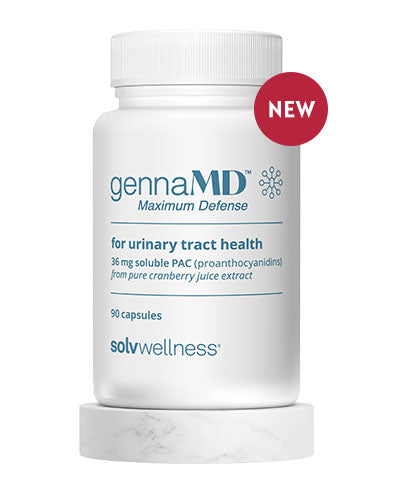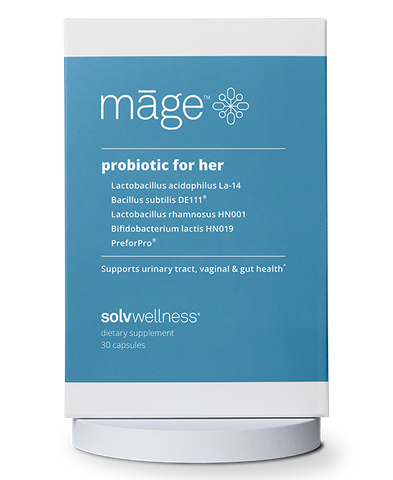If you've been taking D-mannose for UTI prevention and are still getting infections, you’re not alone, and a recent study explains why. A 2024 Journal of the American Medical Association (JAMA) study found that D-mannose was no more effective than a placebo in preventing recurrent UTIs.
Anyone who has dealt with recurring urinary tract infections (UTIs) knows the pain and frustration they cause–not only from the physical symptoms, but also from the endless search for something that actually works. Between social media trends and big promises from supplement ads, it’s hard to separate “hype” from real, evidence-based options.
Despite the attention D-mannose has received online in recent years as a UTI prevention supplement, the science simply doesn’t support the online buzz surrounding it.
D-mannose is a simple sugar structurally similar to glucose, and it has been marketed since the early 2000s as a UTI prevention supplement, particularly for E. coli infections. But does D-mannose actually work?
Although older, small-scale studies suggested possible benefits, which were enough for supplement companies to run with (and at a low cost), the recent large-scale JAMA study tells a different story.
The recent large-scale study demonstrates that D-mannose is unreliable in preventing recurrent UTIs, including the following takeaways:
- D-mannose was no more effective than a placebo in preventing recurrent urinary tract infections.
- Researchers found no meaningful difference in infection rates, symptom relief, or antibiotic use.
- The study concluded that D-mannose should not be recommended for UTI prevention, reinforcing that its benefits are unsupported by strong clinical evidence.
It’s also worth noting that, as a carbohydrate, D-mannose can raise blood sugar, a common concern for people with diabetes or insulin resistance.
Here’s the truth: popularity doesn’t equal effectiveness, and the science behind D-mannose has never been as solid as some may suggest. In fact, the D-mannose vs. soluble cranberry debate continues to highlight how limited D-mannose UTI prevention evidence truly is.
Science shows that soluble cranberry PAC (proanthocyanidins) are effective in preventing bacteria from adhering to the bladder wall. However, only the cranberry PAC extracted from pure cranberry juice delivers the strongest results (versus PAC from the whole berry). In fact, a head-to-head clinical study has proved that soluble cranberry PAC outperforms D-mannose.
The American Urological Association (AUA), a leading authority in urinary tract health, also recommends bioavailable cranberry PAC as a validated, trusted, and non-antibiotic UTI management option that clinicians should offer to patients. Meanwhile, the guidelines advise clinicians to tell patients that D-mannose alone may not be effective for UTI prevention.
GennaMD by Solv Wellness uses 100% soluble cranberry PAC from pure cranberry juice extract—the formula that is clinically proven to support urinary tract health and help get ahead of infections.
D-mannose simply doesn’t hold up in rigorous research. A soluble cranberry PAC supplement, like GennaMD, does. You deserve a solution like GennaMD that is grounded in real science and backed by 24 clinical studies.*
If you’ve been spending money on D-mannose and still struggling with UTIs, you’re not alone, and you’re not out of options. GennaMD delivers the highest quality urinary tract support, so you can feel confident, comfortable, and healthy every day.
Learn more about how GennaMD by Solv Wellness helps keep your urinary tract clean and supported with pure cranberry juice extract and advanced, non-antibiotic UTI-prevention science.










